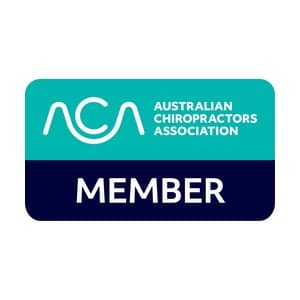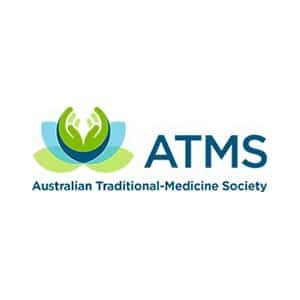The future of children’s health is affected a lot by their well-being in the first few years of life. It is during this time that the spine and related joints, bones and muscles develop.
Prevention is better than cure! Spinal problems can develop over time into conditions such as joint immobility, back and neck pain as well as headaches. Developmental spinal problems can also lead to coordination problems such as delayed motor skills, growing pains and some sleep disorders. Following medical intervention, Chiropractic care can be beneficial in treating the mechanical after effects of childhood congenital disorders such as hip dysplasia and Perthes Syndrome. Chiropractic can help assist in restoring function of the involved joints and may contribute in improving there quality of life.
It is recommended that children be assessed at a young age, at which time the development of the spine, joints and muscles will be investigated thoroughly by the chiropractor. These assessments are particularly useful when your baby enters a new developmental milestone, such us when the child begins to sit, crawl or walk. This can ensure that these movements are being performed correctly and quickly identify any imbalances that may impede proper spinal maturity.
Many parents and doctors are often concerned that a child’s chiropractic treatment will be forceful. But this is far from the truth. Chiropractic care for kids is very gentle and consists of gentle joint adjustments and mobilisations with some light muscular treatment and specific exercises (if needed).
It is important to note that the team at Back to Basics Chiropractic place an emphasis on proper spinal and muscular function and this is reflected in our treatments.
Read more about common childhood problems which can be helped by chiropractic:
Coordination Problems
Tumbles, trips and clumsy skills are all part of growing up as we develop our fine motor capacities. For some children, however, this clumsiness extends well past the usual time period into late childhood. Co-ordination problems affect around 6% of children. Many people refer to this as simple clumsiness, yet this title does not express the severity of the disorder.
Read more about Coordination Problems >>
Congenital Hip Dysplasia
Congenital Hip Dysplasia (CHD) refers to the abnormal or delayed development of the hip joint, in which the socket and thigh bone can become dislocated. This condition occurs in 1.5 per 1,000 births and is 8 times more common in girls[1]. Normally, a child’s thigh bone (femur) sits perfectly centred in the hip socket (acetabulum). Occasionally, however, during gestation or shortly thereafter, the two parts become unaligned, allowing excess movement in the joint. Usually this involves the femur moving upward out of the socket.
Read more about Hip Dysplasia >>
Growing Pains
Adults are not the only ones who experience aches and pains in their joints. As many as 10-20% of children complain of vague recurrent leg pain especially at night, this pain is usually located deep in the leg usually in the thigh, knee or calf. These symptoms are commonly dismissed as ‘growing pains’. This may not be the case and some easily treatable problems may go ignored.
Read more about Growing Pains >>
Perthes Syndrome
Leg-Calve-Perthes Syndrome is a disorder of the hip joint in children. The causes of Perthes syndrome are unknown but it is believed that it initially begins when the blood flow to the top of the thigh bone (femur) is interrupted. This reduced blood supply causes the ball shaped bone structure to collapse and flatten.
Read more about Perthes Syndrome >>
Sleep Disorders
Getting good quality sleep is vital to the development of young bodies and minds. Good sleep helps to develop memory and alertness and strengthens the immune system. Research has shown that children who do not get enough sleep show poor concentration and attention, memory difficulties and even behavioral problems in school. Children who sleep better are less prone to sleep walking, nightmares, behavioral problems and moodiness.
Read more about Sleep Disorders >>
Scoliosis
Scoliosis is an excessive curve or twist of the spine. The spine has a natural curve when looking from the side, but should be straight when viewed from front-on. Occasionally however, the spine can appear as an “S” or “C” shape rather than a straight line when looking front-on. The most common form of scoliosis is adolescent scoliosis, which appears in children after the age of 10. Scoliosis generally is more common in females than males, with suggestions that the rate of scoliosis is eight times higher in girls than boys. It can continue to progress into the early 20s when the bones of the spine are fully mature. The younger you are when scoliosis appears, the greater the chance of curve progression. Scoliosis occurs rarely in adults.
Read more about Scoliosis >>
School Bags & Posture
Your child’s health and well being is without a doubt your number one priority. During childhood, adolescence and into teenage years the musculoskeletal system is experiencing a lot of growth. As Chiropractors we recognise the importance that correct posture plays in the prevention of musculoskeletal injuries. One common culprit which contributes to poor posture in children are their school bags.
Read more about School Bags & Posture >>
Social Media & Stress on the Spine
According to numerous surveys, use of mobile devices (tablets, smartphones and e-readers) is growing each year. These devices are used for socialising, playing games, research and are increasingly utilised by teachers both in and out of classroom to set specific tasks to complete.
Read more about Social Media & Stress on the Spine >>





